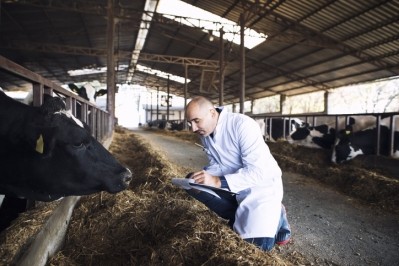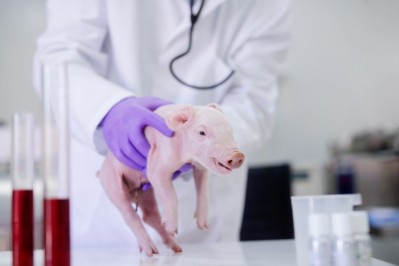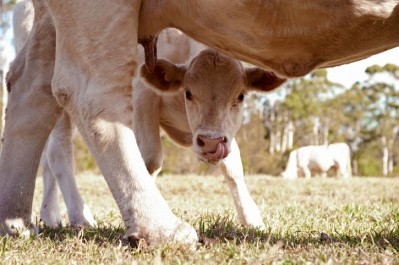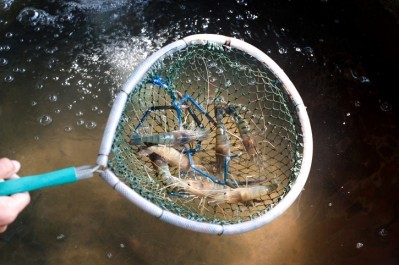New antibiotic reduction goals for UK pigs, cattle, broilers and fish
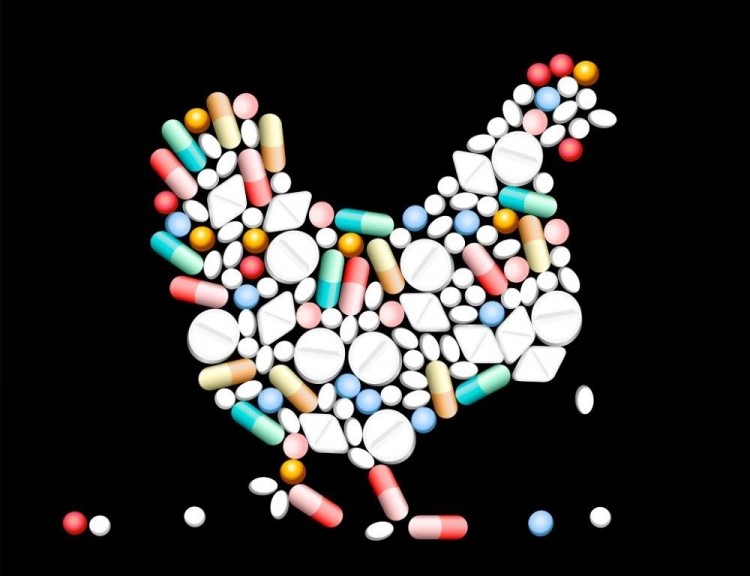
The targets were announced at a London conference last week hosted by the Responsible Use of Medicines in Agriculture (RUMA) Alliance.
That alliance said it has facilitated the development of the farmed animal specific antibiotic reduction goals over the past year under a targets taskforce, an initiative proposed after the 2016 O’Neill Review on Antimicrobial Resistance was published in May 2016.
The alliance said the working party comprised a veterinary surgeon and farmer from each of the beef, dairy, egg, fish, pig, poultry meat and sheep sectors, who have been consulting with key organizations in their respective industries.
The taskforce also included observers from regulators such as the UK’s Food Standards Agency (FSA) and the UK’s Veterinary Medicines Directorate (VMD).
“While the targets each sector has set vary according to the availability of data and scope in their sector, the targets as a whole have been described as ‘positive and proactive’ by the VMD,” noted the alliance.
Decrease in sales of antibiotics in the UK
The news of the new RUMA promoted targets followed a report from the UK’s Department for Environment, Food & Rural Affairs (Defra) showing sales of antibiotics for use in animals in the UK have fallen to their lowest level since records began.
Such sales dropped by 27%, from 62 mg/kg in 2014 to 45mg/kg in 2016, surpassing a government target of 50 mg/kg set following recommendations in the 2016 O’Neill Review.
As well as the overall reduction, the report shows a further drop in sales of the highest priority antibiotics that are critically important for humans. Sales of these accounted for less than 1% of all antibiotics sold for use in animals in 2016. This included an 83% reduction in the use of Colistin, an antibiotic of last resort for use in people.
Pig sector
The Defra data demonstrated that antibiotic usage in the UK pig sector already fell by around 34% between 2015 and 2016.
However, the UK’s National Pig Association (NPA) moved to counter UK national mainstream media reports following the release of the new RUMA targets. The trade group said the reports focused mainly on the relative high usage of the pig industry rather than what it has achieved to date in terms of antibiotic reduction goals.
The NPA stressed that the headlines that matter from last Friday's announcement in London were:
- A 34% reduction in pig usage of antibiotics from 278 mg/PCU in 2015 to 183 mg/PCU in 2016
- A 73% reduction in use of critically important antibiotics from 1.0 mg/PCU in 2015 to 0.3 mg/PCU in 2016, representing just 0.1% of total antibiotic use
- A commitment to reduce usage by 62% to 99mg/PCU by 2020 in annual stages.
NPA chief executive, Zoe Davies, did acknowledge that, historically, the UK pig industry has been a relatively high user of antibiotics. "There are many reasons for that, including the specific disease challenges the UK industry faces and a long period of poor prices for pork which prevented much needed reinvestment on farms."
RUMA targets task force member and president of the Pig Veterinary Society, Mark White, said next steps for the UK pig sector were to focus on eliminating routine preventative treatment where it is still happening, mainly due to lack of resource or expertise. “We can also work to improve water delivery systems so that more targeted treatment in the water can be used instead of in-feed medication.”
Dairy cattle
The UK dairy cattle sector has committed to a 20% reduction by 2020, with a particular focus on halving use of the highest priority CIAs. The work to achieve this will be led by a newly created Dairy Antimicrobial Stewardship Group (DASG) that includes all key organizations in the sector.
The RUMA alliance said that some of the strategies to achieve these goals in dairy farming include reducing the use of antibiotic dry cow therapy and injectable products, and cutting back on group treatments such as antibiotic footbaths for lameness which remain largely unproven, instead using topical and targeted treatments.
Di Wastenage, dairy farmer, task force member and DASG chair, said the sector needed to be ambitious about what it could achieve. “While use is lower than in some sectors, there are clear areas to tackle where use can be habitual or common disease problems go unchallenged.
“For example, eliminating BVD and Persistently Infected animals from the herd is one of the obvious places to start, as well as talking to your vet to calculate the usage levels you have at the moment. Calf rearing can produce a ‘hot spot’ of treatment, as can digital dermatitis. Everyone has the potential to use antibiotics more responsibly somewhere.”
Broilers, layers, fish
Three other UK farmed animal production sectors – poultry meat, laying hen and fish – either are already low users of medicines or have made significant reductions over the past five years, said the RUMA alliance.
These sectors said they will be focusing on maintaining use at the minimal level needed to ensure good health and welfare among their livestock, while tackling emerging challenges should they arise.
The UK broiler sector, previously described as a ‘pathfinder’ for the rest of the farming industry, has already reduced use by 71% between 2012, when its stewardship scheme was introduced, and 2016.
In doing this, the poultry meat sector has also ceased all preventative treatment and use of the highest priority CIAs, said the alliance. It will now maintain current levels in chickens and look for further reductions in turkeys. This sector will use clinical governance to ensure CIA antibiotics are only prescribed when absolutely needed and with sign off from veterinary specialists and management, said RUMA.
The UK laying hen and fish sectors have similarly committed to continuing low use, with layer production eliminating all use of highest priority CIAs in the past two years, continued the alliance.
The development of a vaccine in the UK salmon sector several years ago successfully controlled one of its most challenging bacterial diseases, so the focus has turned to the health of the ‘cleaner fish’ used to provide natural control of sea lice, it continued.
The UK trout farming sector, with its greater number of small producers, is reportedly concentrating on reducing the need for antibiotics and improving data capture.
Beef cattle
The UK beef and sheep sectors are already low users of antibiotics, but have acknowledged they each need better data, and will also commit to addressing ‘hotspots’ of use. Both have committed to a 10% reduction in antibiotic use by 2020, subject to securing better data.
For the beef sector, reduction in use centers on calves and young stock, particularly in the areas of respiratory disease.
